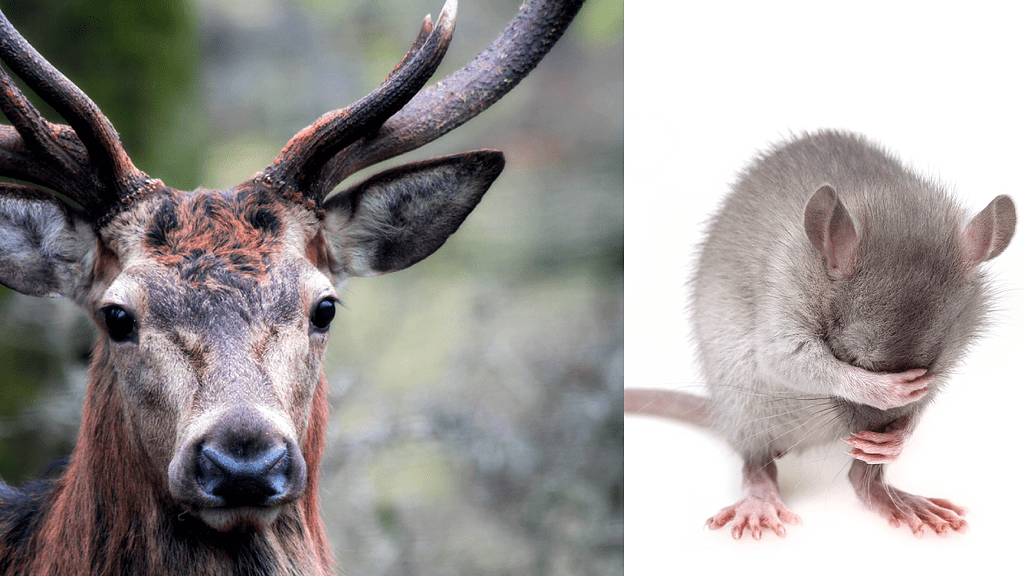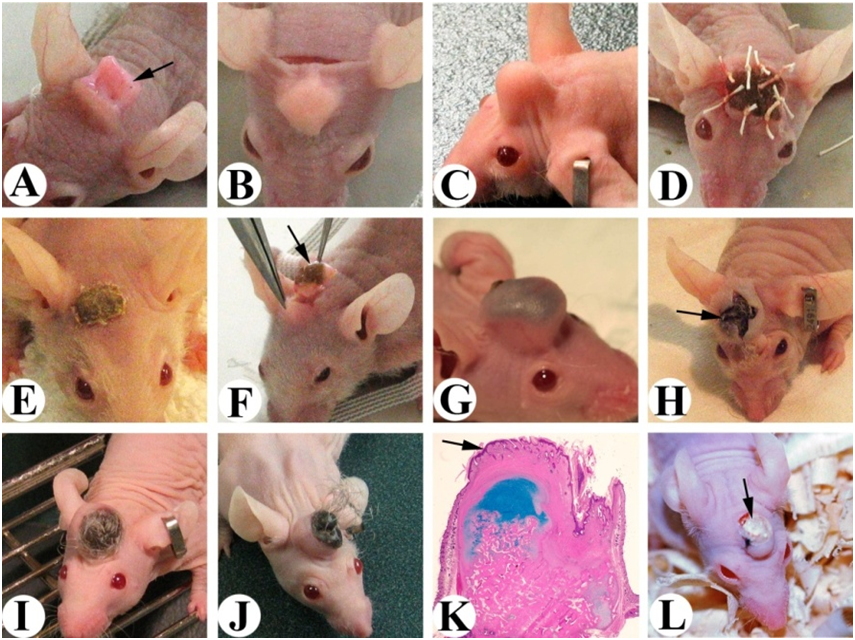
Every spring, male deer start sprouting bizarre, twisting structures out of their foreheads. The buck’s head churns out tissue at a dizzying rate, causing the antlers to grow as fast as three-quarters of an inch per day. As the antlers grow, they branch into increasingly large forks. Then, every autumn, once the mating season is over, the antlers fall off and the cycle begins anew. That’s in stark contrast to other animals with bony growths on their heads, such as rhinos, rams, and impala, whose horns grow when they’re young and remain for their whole lives.
This almost miraculous kind of tissue growth inspired researchers at Northwestern Polytechnical University in Xi’an, China, to investigate whether deer antlers could be of any use as a model for organ regeneration in mammals. The twist is that they set out to do so with a rather unorthodox experiment: by implanting deer stem cells into the foreheads of mice, which subsequently grew mini antlers.
Why did scientists grow mini antlers on mice?

A) one day after antler shed,
B) 15 days after shed, scab still attached,
C) 30 days after shed, scab is shed (A, B, C same animal),
D) about three months after shed by different animal,
E) about five months after shed antler growth is completed, with one additional month used to complete hardening and drying of velvet (D and E same animal), and
F) hardened antler with shreds of dried velvet on a third animal.
Credit: A-E, Steve Demarais, F, Dave Hewitt/ Mississippi State University Deer Ecology and Management Lab.
New antler growth starts at the pedicle, the growing base attached to the skull, and is regulated by hormones like testosterone. The growth cycle coincides with the breeding season, so males have hardened antlers that they can use to fight with other males to establish dominance and win breeding privileges.
During the early growth cycle, the antlers start off as bumps, covered in a soft, velvet-like material that contains blood vessels and nerves. This velvet helps to supply the growing antlers with nutrients and oxygen, as well as protect them as they develop.
As the antlers reach their full size, the velvet dries up and falls off in a process known as velvet shedding. At this stage, the blood ceases to flow to the antlers, which are now fully mineralized bones.
Finally, after the breeding season, cells start to demineralize the bone between the pedicle and antler, causing the antler’s connection with the skull to weaken and the antler to fall off.
This entire process is truly remarkable. It’s akin to growing an entire femur bone in less than six months. But all of this comes at a cost.
In order to grow their prized antlers, bucks have to siphon nutrients from other parts of the skeleton, effectively triggering reversible osteoporosis in other bones during the intense breeding season. The toll of antler growth is on par with gestation, which speaks volumes about the taxing nature of sprouting bones out of their foreheads.
From growing antlers to growing lost limbs
But it is perhaps not surprising that many scientists have looked at antlers and wondered if there are any lessons they could learn that might apply to medicine and tissue regeneration. Wolfgang Pita Thomas, a neuroscientist at Washington University in St Louis, for instance, is fascinated by the fact that nerves inside antlers regenerate ten times faster than nerves in humans.
She is currently actively researching ways to transform this rapid growth into new therapies for our own nervous systems that accelerate the regeneration of damaged nerves, such as in the case of a paraplegic injury.
This brings us to the Xi’an researchers, who first zoomed in on the cellular makeup and gene expression dynamics of antler tissue during various stages of growth. Once they homed in on the stem cell populations most involved in antler growth, which were found in the antler pedicle, they isolated them and then did something rather radical: they inserted those cells directly into the skulls of lab mice.
Within 45 days of implantation of a distinct subtype of stem cells, known as “antler blastema progenitor cells”, the mice grew relatively large bumps on their heads that resemble early antler-like structures, complete with cartilage and bone. Stem cells harvested from shed antlers no more than five days older produced the best results.
This is not the first time that scientists have attempted to grow antlers on mice. In 2020, another team, also from China, managed to grow antler stumps on the skulls of mice after implanting deer antler tissue right under the forehead skin.

Despite their outlandish appearance, the implanted mice are healthy and the researchers hope to apply their findings in clinical bone repair and even limb regeneration. Obviously, there’s still a long way to go before scientists can bridge the gap from growing antlers on mice to regrowing a person’s missing limb, but you have to start from somewhere.
The findings appeared in the journal Nature.



